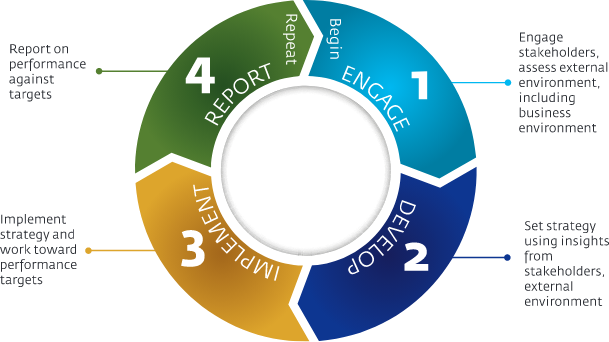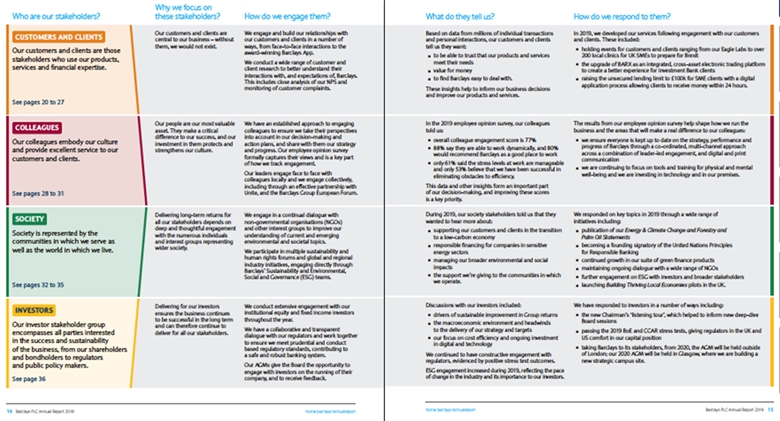Best Practice
Process of Ongoing Stakeholder Dialogue
Ongoing stakeholder dialogue is a process of “mutual” learning, which supports an open and transparent company culture of involvement, engagement, and connectivity both inside and outside the organization.

LINK >>> Reporting on the governance of stakeholder engagement
Annual reports should also address the governance and board oversight of stakeholder engagement, including stakeholder mapping, engagement policy, and grievance mechanisms for workers and affected communities.

